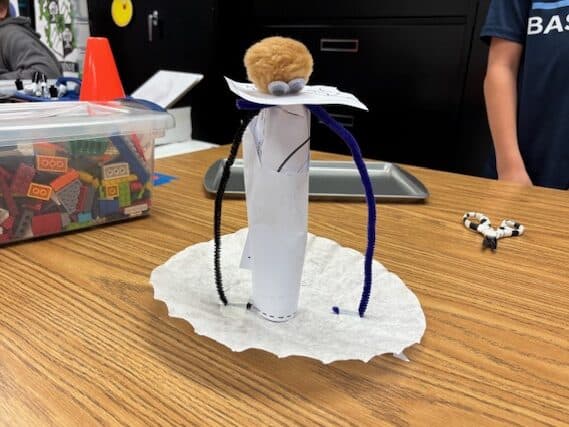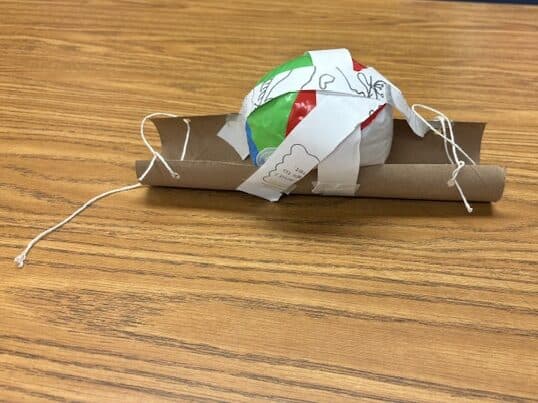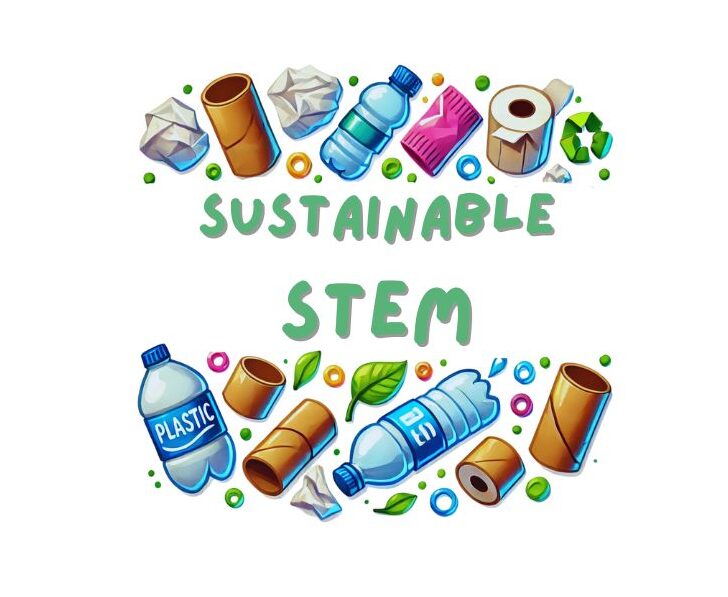When it comes to STEM education, there’s nothing like seeing students fully absorbed in a design challenge, pipe cleaners flying, and gears turning in their heads. However, let’s be honest about the flip side: STEM often generates a significant amount of material waste. How many times have you looked at a massive pile of used craft sticks, plastic cups, and abandoned paper prototypes and wondered where it all goes? That feeling of environmental guilt, combined with the classroom clutter, can be truly overwhelming.
As a teacher dedicated to sustainability, I found a solution: Sustainable STEM. This philosophy means we still follow the rigorous Engineering Design Process (EDP), but we use materials primarily sourced from our own homes or the classroom recycling bins.
The big win? When the challenge is over, most materials go right back into the recycling bin, minimizing classroom clutter and teaching students about circular design in the most practical way possible. It turns “junk” into a supply cabinet.
The Blueprint: Engineering Design Process, Recycled Style
Every great invention needs a roadmap, and for us, that’s the Engineering Design Process (EDP). The EDP gives structure to a basket of recyclables, ensuring students learn core engineering principles.
We always start with the “Ask”. This initial prompt defines the problem, the goal, and the constraints. The sustainability theme is built right into the constraints: students must use only the limited, salvaged materials provided. This naturally forces collaboration and teamwork, as they must communicate to share and utilize every pipe cleaner and paper scrap effectively.
Ready to try it? Here are two challenges my students absolutely love, proving that low-waste materials lead to high-impact learning.

Challenge Spotlight 1: Harry Needs a View!
This challenge is a fantastic introduction to structural stability and overcoming constraints.
- The Ask (Problem): Harry (a fuzz ball) needs a perch so that he can easily see around the lab.
- The STEM Rules (Constraints):
- He must be 8 inches off the table.
- The perch must hold Harry without the help of tape (on the weight-bearing area).
- The perch must be free-standing.
- Must be created only out of the provided materials.
- Sustainable Materials: 3 pipe cleaners, 1 scrap paper, 1 coffee liner, 7 inches of tape.
- The Lesson: Students learn to use folds, tension, and material shape (like rolling the paper or coffee liner) to create a supportive structure, teaching them that material efficiency is a crucial part of design.

Challenge Spotlight 2: The Zero-Touch Transport
This challenge focuses on motion, simple machines, and force distribution, all using items that were destined for the bin.
- The Ask (Problem): Using the materials provided, create a device to carry the beach ball from one end of the room to the other WITHOUT touching the ball.
- The STEM Rules (Constraints):
- You CAN NOT tape the beach ball to your device.
- The ball must be carried in your “CARRIER.”
- The ball can NOT be held in your hands or on your arms.
- Sustainable Materials: Recyclable paper, paper towel roll, tape, and string left over from a craft project.
- The Lesson: Students have to engineer a mechanism (often a sling, cradle, or scoop) using recycled materials to safely secure and transport an object. The limited materials force them to be inventive with simple mechanical principles.
Low-Waste, High Impact
The power of these challenges lies in their simplicity and their clear environmental message. By utilizing materials that can be easily recycled afterward, we eliminate guilt and clutter while reinforcing the lesson that resources are valuable, no matter their initial state.
Sometimes we do save a particularly interesting piece of string or a perfectly shaped cardboard tube for a future challenge—it’s all part of the reuse cycle.
I encourage you to look at your own recycling bins as a hidden supply cabinet. Every crumpled piece of paper or empty towel roll is a future STEM innovation waiting to happen!
Interested in Learning More About Sustainable STEM?
Take a look at some of the other blogs based on Sustainability in the Classroom.
